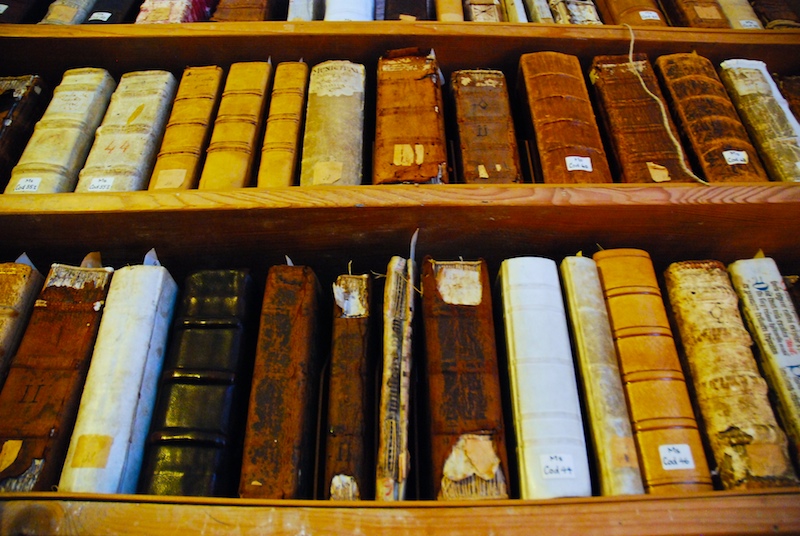Research Guide
Instead of looking for primary source documents with a random Google Search, start with actual history sites!
What to do:
Let’s say you have the prompt: “What were the three most significant causes of the Fall of Rome“
1. Plan your search.
Before finding primary documents, you need to know WHAT you are looking for. Review a history book to get a general idea of the kind of answer you seek. Make a list of at least 10 keywords you are looking for. Narrow down what exactly you are looking for. Are you looking for a journal, a letter, a picture, a speech, a statistic?
Berkeley has a helpful list that can help you “Know Before You Search.”
Plan: I read in my textbook that the borders were weak. Barbarians came. I read about the moving of the Capital to Constantinople.I read about problems with the emperors, and about nationalism, something about Theodosius.
“Fall of Rome,” “barbarians,” “Constantinople,” “Theodosius,” “Roman borders,” “Roman emperors,” “Roman nationalism,” and “Theodosius” are my search terms.
I am hoping to find a letter that a Roman who lived then wrote describing the problems they were having.
2. Narrow Down, then Search
Click on the most relevant link below. Narrow down from category to subcategory. Use the search feature to type in your pre-planned search terms.
Hint: you can do a search on any website, even if they do not have a search feature, by using the following method.
In the address bar, copy the website up until the subfolder you are interested in. (Make sure the subfolder does not end with .htm or .html, because that will merely search on the page, not for all related documents.)
Write— site:http://(website address)/ space (search term).
For example: site:http://spartacus-educational.com/ barbarians
3. Document Where You Found Your Material
Stay Organized! Scrivener is a good method for organizing research, since in one project there are different areas to file various types of information–chapters or pictures or research links.
Don’t forget to copy the source link BEFORE copying the vital information. Always copy the link first, paste it on your sources page. (You can format it later, but get that link saved!)
The worst thing a researcher can do is to spend hours finding something, but then not be able to track it down again later, so he is not able to use that evidence. Back up where you found that vital piece of information.
The Links
Ancient and Medieval History
I) Global History and Geography: Reading and Documents (Alternately available from Classical Historian). This book is a very nice introduction to the value of primary documents. There are questions at the end of each excerpt, enabling students to consider the source critically. Though it is not an internet source, it provides a necessary and “bite-size” transition to the study of primary source documents.
US History, Uniquely
II) Library of Congress American Memory Timeline in particular is the holder of primary documents from United States history.
World History, including US History
III) Spartacus Educational exists for the purpose of connecting young readers to primary source information. This site index sorts history by topic or by time period.
IV) Primary Sources by Century—USC LibGuides (many login required, but some are free access)
V) Library Guides at Bowling Green Early American History, 18th Century, 19th Century, 20th Century, 21st Century
VI) JSTOR.COM There are a lot of historical documents here. You can sign up for a free account and have access to three documents at a time. While these are not all directly primary documents, they quote primary documents and can be a valuable source of books to look for. Often Jstor leads you to Google Books.
VII) Online Books a) Google Books I have found quotations of otherwise unavailable research in topical studies available in the searchable academic books available through Google Books. Some pages are not-viewable, but often those missing pages can be found if the books has an b) Look Inside feature on Amazon. Sometimes the books are available secondhand at a very reasonable price. c) Gutenberg.org has many digital copies of documents available for free online viewing or download. If the document is in the public domain, it may be found there
 These are starting places. The key is to have a direction, key words, a plan. If you do not prepare yourself before you begin, you will get lost in a swamp and turn up nothing substantial, having wasted your time. Know what you want and see what treasures you find!
These are starting places. The key is to have a direction, key words, a plan. If you do not prepare yourself before you begin, you will get lost in a swamp and turn up nothing substantial, having wasted your time. Know what you want and see what treasures you find!
Here are some other Links to look into
How to Use Youtube for Primary Source Info


